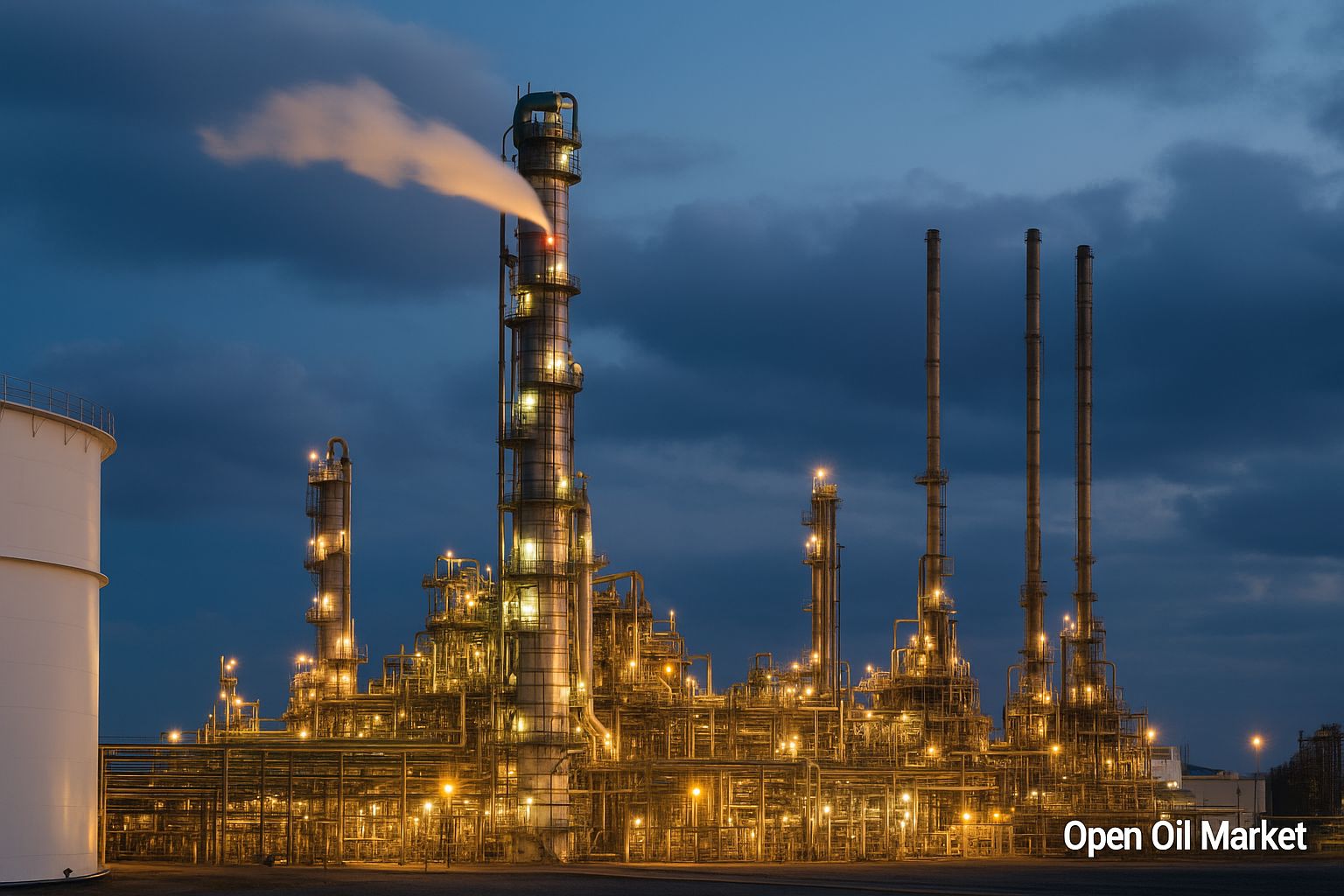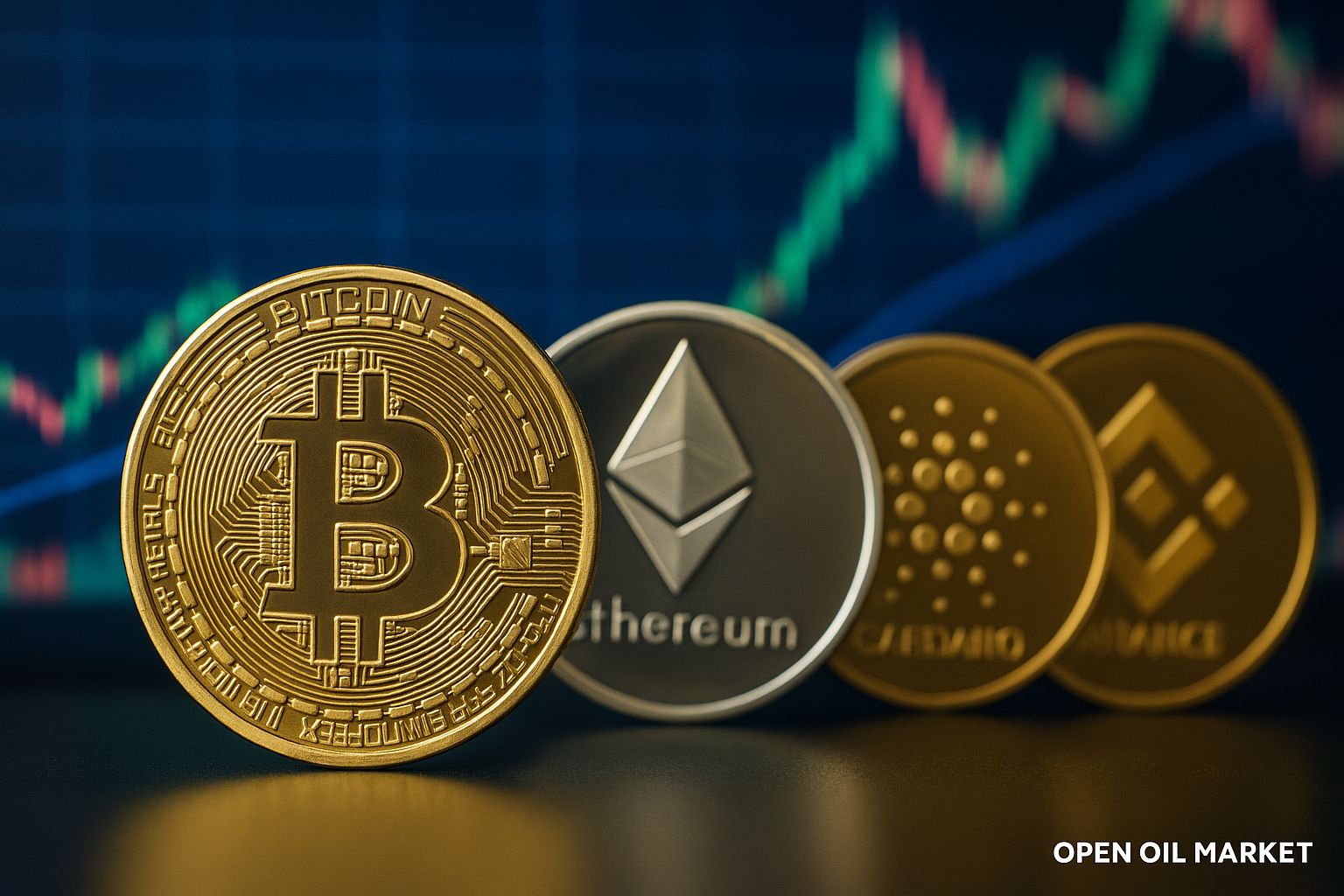
Current Startup and Venture Capital News as of August 22, 2025: Mega Funds Make a Comeback, New AI "Unicorns" Emerge, IPO Activity Revives, and Global Venture Capital Expansion.
As of late August 2025, the global venture capital market is confidently emerging from the prolonged downturn of recent years. Investors worldwide are actively funding technology startups once again: deals are being struck at record amounts, and IPO plans for promising companies are back in the spotlight. Major venture funds and corporations are resuming large-scale investments and launching new investment programs, while governments across different countries are increasing support for innovative businesses in a bid to keep pace in the global technology race. Private capital is once again flowing into startup ecosystems, providing young companies with liquidity for growth.
Analysts estimate that the first half of 2025 has been the most successful since 2021 in terms of overall venture capital investment. In the United States and Canada alone, startups raised approximately $145 billion during this period (+43% compared to the same period last year)—a record for the past three years. The total influx of capital into the venture market has significantly increased, driven by a series of massive funding rounds in the artificial intelligence sector. Venture activity spans all regions: North America remains particularly dynamic (accounting for up to 70% of global investments, with a significant portion in the AI sector), while a genuine investment surge is noted in the Middle East (with investments in Gulf region startups reaching approximately $2.1 billion in the first half of 2025, +134% year-on-year). There has been a shift in Europe, with Germany, for the first time in a decade, surpassing the UK in terms of venture funding, reflecting the strengthening of continental startup ecosystems. In Asia, the situation is uneven: investments in Chinese startups remain depressed (declining about 33% year-on-year), while India, Israel, Southeast Asia, and Gulf countries show growth, attracting record capital. Emerging markets are also trying to catch this new wave (for example, the CIS countries) despite external constraints. A new global venture boom is forming, even as investors remain selective and cautious.
Below are the key events and trends shaping the current agenda of the venture market as of August 22, 2025:
- The return of mega funds and large investors. Leading players are forming record venture funds and ramping up investments, once again saturating the market with capital and heightening risk appetite.
- Mega rounds in AI and new "unicorns". Unprecedented investments are raising startup valuations to unprecedented heights, particularly in the artificial intelligence sector.
- Revitalization of the IPO market. Successful tech company public offerings and new applications confirm that the long-awaited "window" for exits has reopened.
- Diversification of sector focus. Venture capital is flowing not only into AI but also into fintech, climate projects, biotech, defense technologies, and even crypto startups, broadening market horizons.
- A wave of consolidation and M&A deals. Major mergers, acquisitions, and strategic investments are reshaping the industry landscape, creating new exit opportunities and accelerating company growth.
- Global expansion of venture capital. The investment boom is spreading into new regions—from the Gulf States and South Asia to Africa and Latin America—where their own tech hubs are developing.
- Local focus: Russia and CIS. Despite constraints, new funds and initiatives are emerging in the region to develop local startup ecosystems, increasing investor interest in local projects.
The Return of Mega Funds: Big Money Back in the Market
Major investment players are triumphantly returning to the venture arena, signaling a renewed appetite for risk. The Japanese conglomerate SoftBank has announced the launch of its Vision Fund III, targeting advanced technologies (with a focus on artificial intelligence and robotics) and approximately $40 billion in volume. Concurrently, sovereign funds from Gulf countries have become active, pouring billions of dollars into innovative projects and developing mega-programs to support the startup sector, thus forming their own tech hubs in the Middle East. Moreover, dozens of new venture funds (including corporate ones) are being established worldwide, attracting significant institutional capital for investments in high-tech sectors.
Not to be outdone, esteemed investors from Silicon Valley are also on the move. In the U.S. venture sector, funds have amassed unprecedented reserves of uninvested capital ("dry powder")—hundreds of billions of dollars ready to be deployed as confidence returns to the market. For instance, the firm Andreessen Horowitz is raising a new mega fund of about $20 billion, focused entirely on investments in AI companies—one of the largest targeted funds in the industry. The influx of "big money" is once again filling the startup market with liquidity, providing resources for new rounds and supporting the growth of promising companies. The return of mega funds and large investors not only intensifies competition for the best deals but also instills confidence in the industry regarding future capital inflows.
Mega Rounds in AI and New "Unicorns": Investments Hit Records
The artificial intelligence sector remains the primary driver of the current venture boom, demonstrating record funding volumes. Investors are funneling colossal amounts of money into the most promising AI projects, driving startup valuations to unprecedented heights. For example, the American company Databricks raised its Series K round, increasing its valuation by 61% to over $100 billion. Elon Musk's startup xAI has garnered around $10 billion in funding (including venture and debt financing) and reached an approximate valuation of $100 billion, making it one of the most valuable AI companies in the world. Additionally, OpenAI raised another tranche of about $8 billion at an estimated valuation of around $300 billion—both of these mega rounds were significantly oversubscribed, emphasizing the excitement surrounding industry leaders.
Other players continue to attract capital as well. The Canadian AI startup Cohere secured $500 million in August at approximately $6.8 billion valuation, confirming its unicorn status and investor interest in emerging contenders. The current investment boom has generated a wave of new "unicorns." According to some estimates, around 500 private AI companies are now valued at over $1 billion (with a total valuation approaching $2.7 trillion), about 100 of which were founded after 2023. Furthermore, over 1,300 AI startups have valuations of no less than $100 million. Despite signs of overheating, investor appetite for artificial intelligence projects remains high.
IPO Market Revives: The "Window" for Exits is Open
The global initial public offering (IPO) market has noticeably revived after a lengthy pause and is gaining momentum. In Asia, Hong Kong has initiated a new wave of IPOs: in recent weeks, several large tech companies have successfully gone public, collectively raising several billion dollars. The IPO market in the U.S. is also picking up steam: the fintech unicorn Chime successfully debuted this summer (with shares up 30% on the first day), followed by the design platform Figma, which raised about $1.2 billion at a valuation of approximately $15–20 billion; its stock prices also went up. In the second half of 2025, several other well-known startups are preparing for an IPO—among them, the payment service Stripe and several leaders in AI and SaaS. Even the crypto industry is seeking to take advantage of the emerging "window": fintech company Circle went public, and cryptocurrency exchange Bullish has filed for a listing with a target valuation of about $4 billion. This wave of IPOs is critically important for the venture ecosystem: successful offerings provide funds with profitable exits and free up capital for new projects, stimulating industry growth.
Diversification of Investments: New Sectors on the Rise
In 2025, venture investments are covering an increasingly wide range of industries and are no longer limited to just AI. Following the decline of last year, there has been a noticeable resurgence in fintech: major funding rounds are taking place not only in the U.S. but also in Europe and emerging markets, stimulating the growth of new financial services. Interest in climate and "green" technologies is also growing—these areas are attracting record investments amid the trend toward sustainable development. The appetite for biotech is returning as well: the emergence of promising medtech solutions and healthtech platforms is once again attracting capital as the industry emerges from a period of declining valuations.
Additionally, amid global instability, investors are increasingly supporting defense and aerospace projects. A notable example is the American company Anduril Industries: the startup raised $2.5 billion, doubling its valuation to approximately $30 billion, confirming high demand for defense technologies. There is also a partial recovery of trust in the cryptocurrency market: some blockchain startups are once again beginning to receive funding. The expansion of sector focus is making the startup ecosystem more resilient and reducing the risk of overheating in specific segments.
Consolidation and M&A: Consolidating Players
Elevated startup valuations and competition for markets are pushing the industry toward consolidation. Major mergers and acquisitions are once again taking center stage, reshaping the balance of power in the technology sector. For example, Google has agreed to acquire the Israeli cybersecurity startup Wiz for approximately $32 billion—a record amount for the Israeli tech industry. Another example involves an American software developer acquiring a European AI startup in a bid to strengthen its presence in a new market.
Such mega-deals illustrate the desire of tech giants to secure key developments and talent. Corporations often prefer to buy innovative projects rather than develop similar technologies from scratch. The surge of activity in the acquisitions sector indicates market maturation: mature startups are merging with one another or becoming the focus of interest from large players, providing venture investors with opportunities for long-awaited profitable exits. The wave of M&A deals opens new pathways for capital exit, allowing funds to realize profits and creating larger competitive players on the global stage.
Global Expansion of Venture Capital: New Markets Gaining Traction
The venture boom of 2025 is taking on a truly global scale, encompassing markets that were recently on the periphery of the tech scene. The Middle East is forming its own tech hubs: Gulf countries are actively funding local startups and attracting international capital into their ecosystems. South Asia is also experiencing a surge: India and Southeast Asian countries are seeing record inflows of venture investments and an increase in the number of unicorns. Startup clusters are rapidly developing in Africa and Latin America—from fintech centers in Nigeria to e-commerce successes in Brazil.
Major venture funds are now closely monitoring promising projects worldwide—from Singapore and Dubai to Nairobi and São Paulo—endeavoring not to miss the next "diamond" of the scene. Founders from a variety of countries are experiencing unprecedented opportunities to attract capital, making the venture market increasingly international. New funds, accelerators, and support programs aimed at developing local ecosystems are being launched in various regions. The investment boom is extending to new territories, integrating them into the global innovation economy.
Russia and CIS: Local Initiatives Amid Global Trends
Despite external constraints, steps are being taken in Russia and neighboring countries to develop their own startup ecosystems in line with global trends. At the St. Petersburg International Economic Forum (SPIEF 2025), a new venture fund was announced with the participation of the state bank PSB—a targeted volume of approximately 12 billion rubles for investing in dual-purpose projects (ranging from drones to AI and robotics). PSB acts as the anchor investor of the fund, attracting private capital as well. Similarly, in Kazakhstan, a state venture fund worth $1 billion has been created to support AI startups. Even under sanctions, the region is seeking ways to finance priority technologies and nurture its own unicorns.
Concurrently, several regional startups are reaching new heights. For instance, the Krasnodar food tech project Qummy has attracted about 440 million rubles at an approximate valuation of around 2.4 billion rubles, preparing for an IPO—this case demonstrates the serious ambitions of the tech business in Russian regions. In July 2025, Russian authorities also eased some restrictions for foreign investors, allowing them to once again acquire shares of Russian companies and freely withdraw capital. This step aims to invigorate international investments in the economy and venture sector, notwithstanding the complex geopolitical situation.
Alumni from CIS countries are already achieving global success. For example, the Belarusian-American AI startup Perplexity recently raised about $100 million at a valuation of approximately $18 billion, while the Dubai-based project Xpanceo (founded by a Russian and a Ukrainian) secured $250 million at a $1.3 billion valuation for the development of "smart" AR lenses. These cases confirm that innovative companies with roots in the region are poised to compete on the forefront of the global technology arena.
Although the scale of the venture market in the CIS is still modest compared to the West, the foundations for future growth are being established. Investors are focusing on more mature projects with proven business models, and the government is expanding support—from developing IT education to creating a network of regional accelerators. This comprehensive approach is laying the groundwork for the emergence of new technology leaders in the region in the coming years.
Conclusions: Cautious Optimism and Growth Quality Prioritization
By early fall 2025, sentiment in the venture industry remains cautiously optimistic. Record deals and successful IPOs instill confidence that the bottom of the downturn has been crossed, yet the experience of the overheating of 2021 keeps investors from euphoria. A focus on sustainable growth and project quality emerges—capital is being allocated to companies with strong products and metrics. The market is entering a new growth phase that is more mature and balanced—participants are striving to avoid past mistakes, betting on the long-term development of startups rather than racing for quick valuations. This disciplined approach gives hope that the new wave of growth in the venture market will be more sustainable and productive for both investors and founders of innovative companies.




